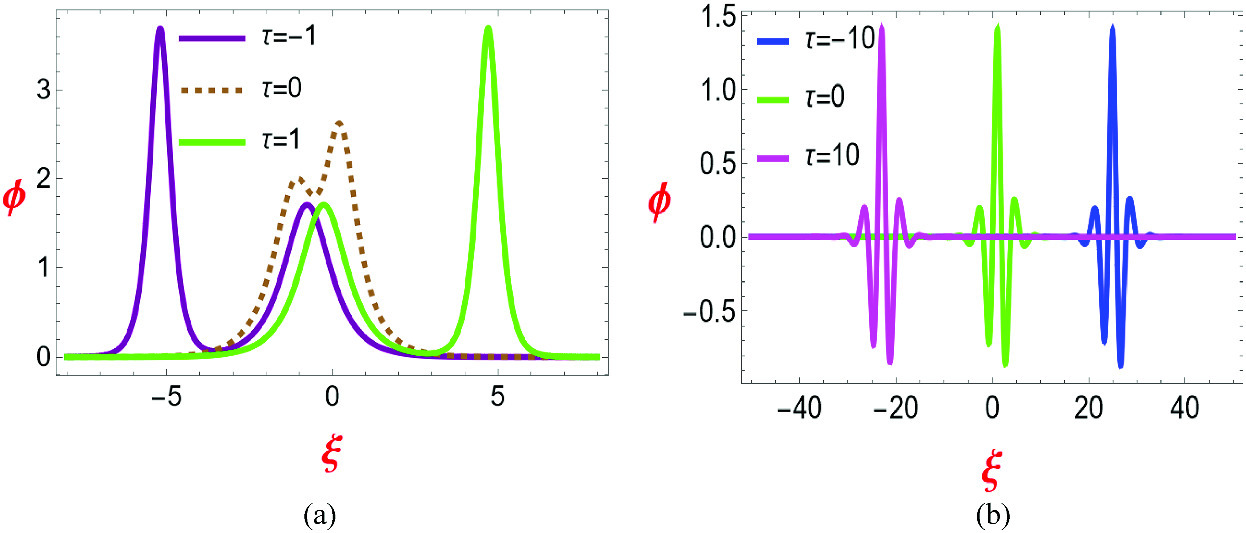https://doi.org/10.1140/epjd/s10053-024-00874-y
Regular Article - Plasma Physics
Study of multi-solitons, breather structures in dusty plasma with generalized polarization force
1
Department of Mathematics, Siksha Bhavana, Visva-Bharati, Santiniketan, India
2
Department of Mathematics, K. K. M. College, A Constituent unit of Munger University, 811307, Jamui, Bihar, India
Received:
21
December
2023
Accepted:
25
May
2024
Published online:
6
July
2024
A theoretical inquiry delves into the presence of multiple solitons and breather configurations within a nonuniform, inhomogeneous, unmagnetized dusty plasma characterized by universally polarized force. This system encompasses ions, electrons, positively and negatively charged dust particles, distributed in accordance with a superthermal distribution. Employing the reductive perturbation technique (RPT), the Gardner equation (GE) is derived from the fundamental hydrodynamical model equations. The multi-solitons of the GE are synthesized utilizing the Hirota bilinear method (HBM), which further facilitates the exploration of breather solutions via the appropriate selection of complex wave numbers. The system exhibits both compressive and rarefactive multi-solitons. Moreover, the behavior of breather structures varies depending on associated plasma parameters; occasionally, they overlap, while at other times, they remain entirely disjoint. This research holds relevance for investigating the propagation of finite-amplitude waves in natural phenomena such as the atmosphere, oceans, optic fibers, and signal processing.
Copyright comment Springer Nature or its licensor (e.g. a society or other partner) holds exclusive rights to this article under a publishing agreement with the author(s) or other rightsholder(s); author self-archiving of the accepted manuscript version of this article is solely governed by the terms of such publishing agreement and applicable law.
© The Author(s), under exclusive licence to EDP Sciences, SIF and Springer-Verlag GmbH Germany, part of Springer Nature 2024. Springer Nature or its licensor (e.g. a society or other partner) holds exclusive rights to this article under a publishing agreement with the author(s) or other rightsholder(s); author self-archiving of the accepted manuscript version of this article is solely governed by the terms of such publishing agreement and applicable law.





